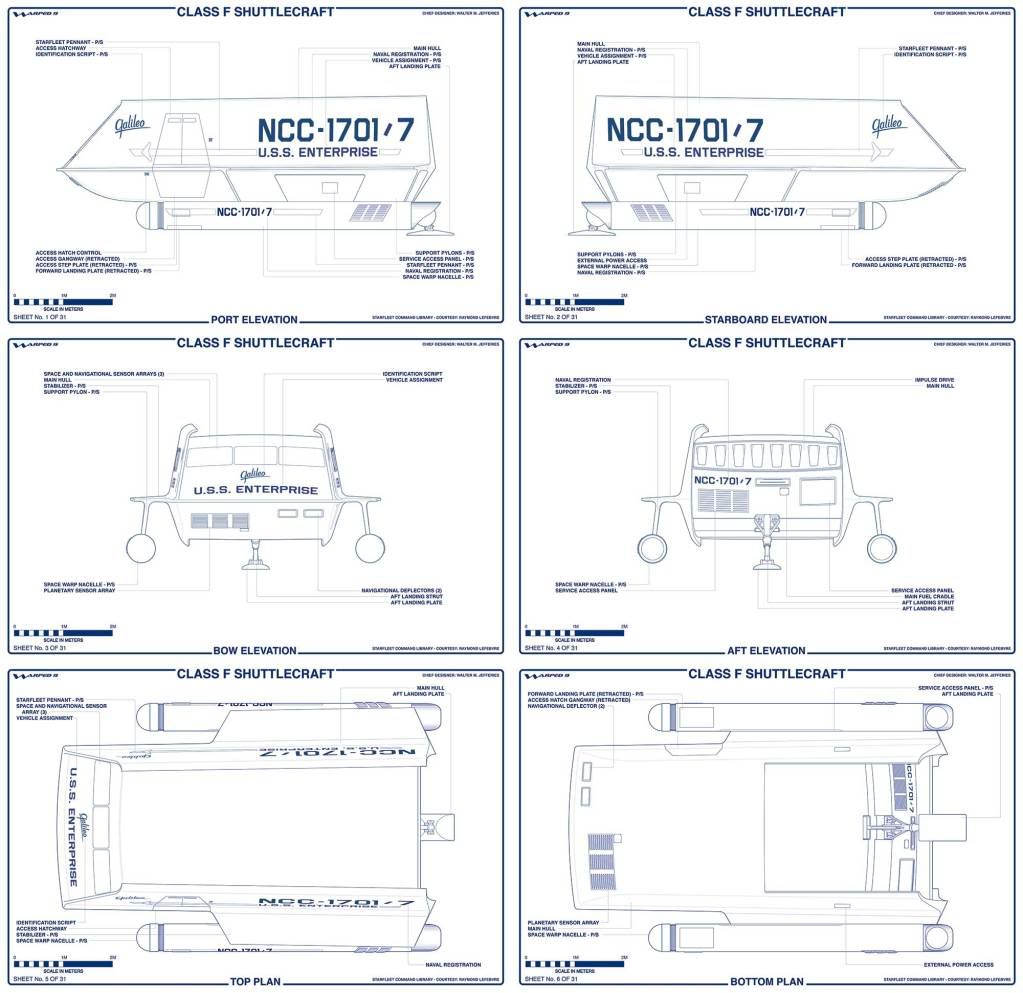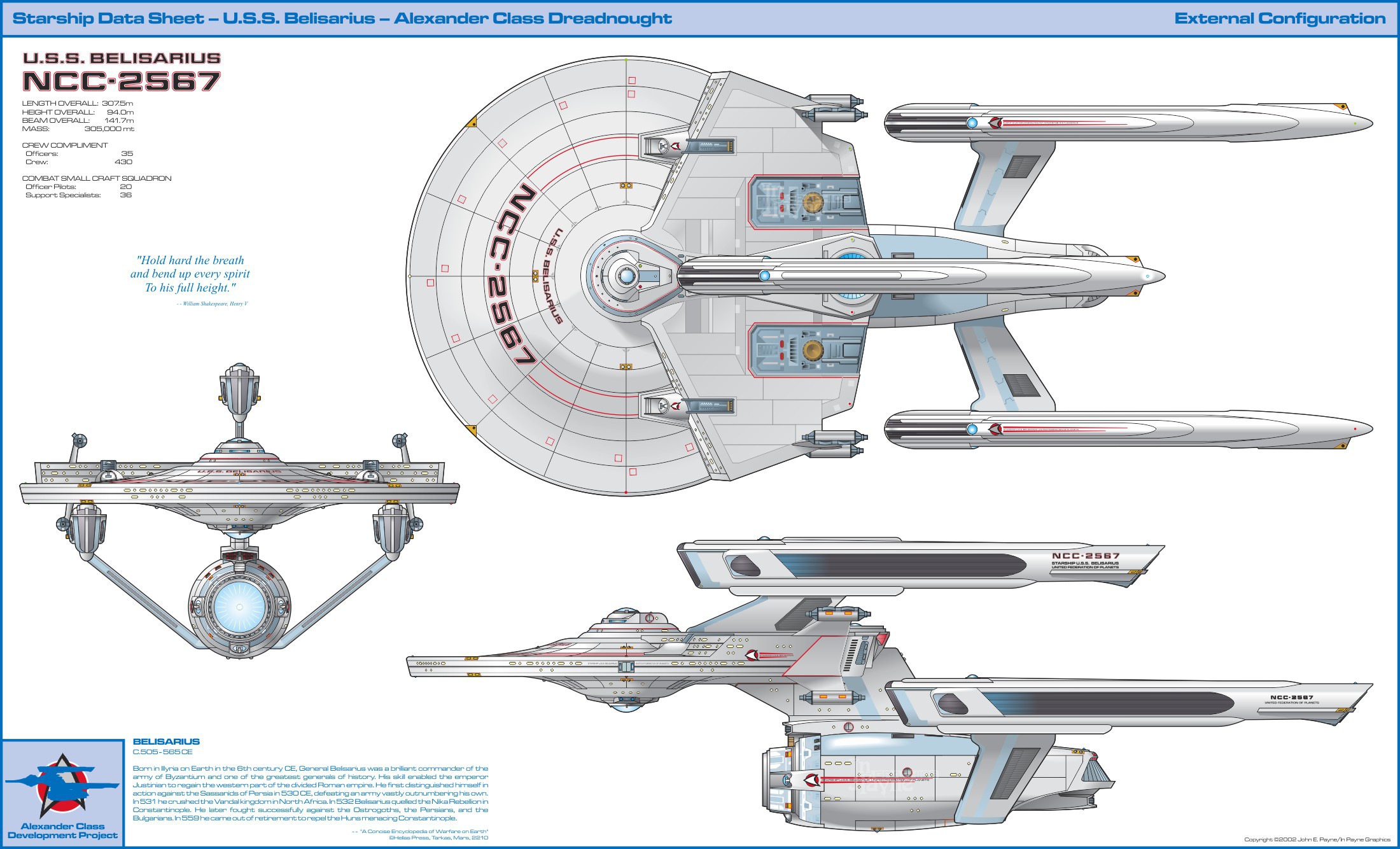The Enterprise blueprints by Franz Joseph have some nice touches that only a fan can pick up on. "There are fourteen science labs aboard this ship!" Count 'em. "I'm in your Deck 6 Briefing Room." And it's there. But I would add a couple of things.
I wish he had included the Emergency Manual Monitor that overlooks the engine room. That's an obvious item and its absence is annoying.
And this thing with the Bridge being offset 36 degrees, that isn't necessary. If I'm not mistaken, FJ overestimated the size of the Bridge floorplan. If you correct for that, you'd have more room in the saucer's exterior structure that houses the Bridge. I think the elevator would then fit over on port side where you'd expect it, and the captain's chair can face forward instead of 36 degrees off.
The supposed elevator housing seen on the ship's exterior could be something else entirely.
I wish he had included the Emergency Manual Monitor that overlooks the engine room. That's an obvious item and its absence is annoying.
And this thing with the Bridge being offset 36 degrees, that isn't necessary. If I'm not mistaken, FJ overestimated the size of the Bridge floorplan. If you correct for that, you'd have more room in the saucer's exterior structure that houses the Bridge. I think the elevator would then fit over on port side where you'd expect it, and the captain's chair can face forward instead of 36 degrees off.
The supposed elevator housing seen on the ship's exterior could be something else entirely.



